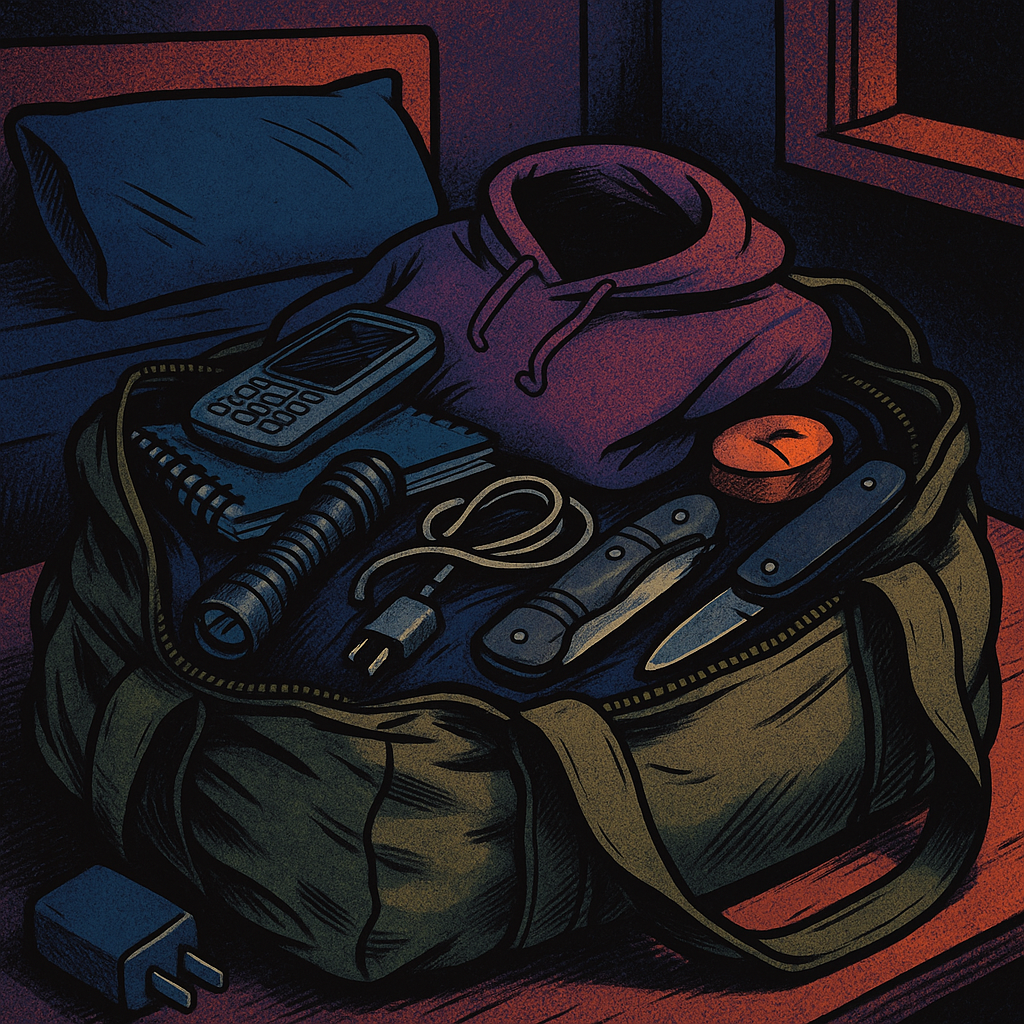This is Part 4 in our Everyday Carry Kit series. If you haven’t read the earlier articles, start here:
- Part 1: How to Build a Tier 1, Primary EDC Kit
- Part 2: How to Build a Tier 2, Secondary EDC Kit
- Part 3: How to Build a Tier 3, Extended EDC Kit
You’re staying in a friend’s spare room, halfway across the country. The funeral wrapped up hours ago, but no one wants the night to end.
You didn’t plan to stay another night. You didn’t pack for it. And now you’re in borrowed clothes, holding a borrowed toothbrush, wondering how to charge your phone or shave in the morning.
Then you remember: there’s an old canvas bag at the back of their hall closet. Yours. You left it here last year.
Inside: a flashlight, a spare shirt, an old charger, basic meds, a pocketknife, and a notepad with numbers you’d forgotten. Nothing fancy. Just enough.
That’s Tier 4.
What Is Tier 4?
Let’s be honest, the name sounds like something out of a government manual. Don’t get too hung up on it. It’s just a way to describe gear that lives a layer deeper than what you normally carry.
Tier 4 is gear you keep in case everything else runs out. Not daily carry. Not your go-to pack. Not your organized admin pouch. It’s deeper.
It’s the stuff that stays tucked away until something breaks, fails, or takes longer than planned. It doesn’t have to be pretty. It just has to be there.
Where is Tier 4 stored?
- In a friend’s guest room
- At a place you visit once a year
- In a forgotten drawer at your family cabin
- Inside a locker at work
Where doesn’t matter as much as this: You don’t count on it. But it counts when you need it.
It’s Not a Packing List…It’s a Buffer
This isn’t another checklist. You’ve probably got those covered.
Tier 4 is more about margin…the space between running out and being fine.
So instead of listing gear categories, think through moments like these:
- You broke your only pair of shoes.
- You’re out of town and unexpectedly staying longer.
- You had to hand off your backpack at a security checkpoint.
- You’re helping a friend who didn’t bring anything.
- You’re traveling and plans change.
Now ask yourself:
What gear lets me absorb inconvenience without it becoming crisis?
Tier 4 answers that.
A worn-in hoodie. A battery pack you forgot you packed. A second headlamp with half-used batteries. A handful of provisions…whatever the kind. A $20 bill. A notebook with names and numbers.
It’s what you packed six months ago that finally pays off.
A Story, Not a System
Tier 4 isn’t gear for gear’s sake. It’s a story:
- The time you stayed with extended family for a week longer than expected
- The time your hotel flooded, and all you had was what was in your old travel bag
- The overnight trip that turned into a weekend
The stuff that made it manageable…that was Tier 4.
You don’t build Tier 4 for show. You build it for overflow.
It’s not sleek. It’s not sorted.
It’s the bag you keep forgetting to repack…until you use it and realize how much worse things could’ve been.
Final Thoughts
There’s no perfect Tier 4 setup. But there’s a question worth asking:
If you had to stay the night somewhere with no warning, what would help you feel prepared?
Start there.
Then pack it.
You don’t have to build it all at once. Throw in the spare gloves. Add a beater flashlight. Keep a knife you don’t love but can trust.
And when that odd day shows up, the one where your gear didn’t make it with you, Tier 4 steps up.
This isn’t your vehicle survival kit. That’s its own thing, and you can read more about it here. Tier 4 is something else. It’s the stuff that fills the gap when the plan fails.
Carry on.

